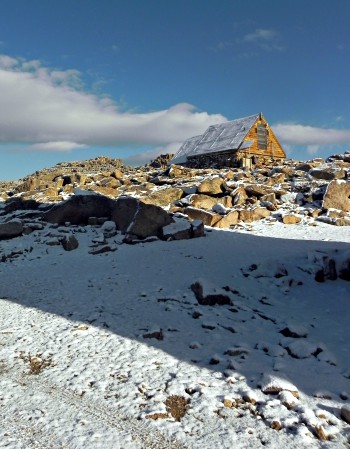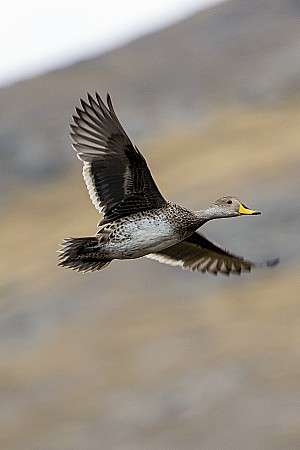Understanding high altitude animals – the “elite athletes” of the natural world

BY Erica Balch
February 2, 2018
They live at the top of the world in some of the most punishing environments on Earth, surviving on snow-covered mountains where oxygen is scarce, and the terrain is frozen, often almost desert-like. They contend with whipping winds and sub-zero temperatures for much of the year, even raising their young beneath the snow.
Animals that live at high altitudes are among the most resilient in the natural world and McMaster researcher Graham Scott has spent much of his career trying to understand what it is that makes these remarkable species able to not just survive, but thrive in such harsh conditions.
“They’re the elite athletes of the animal world,” says Scott, Canada Research Chair in Comparative and Environmental Physiology and an associate professor in McMaster’s Department of Biology. “Animals that live at high altitudes are doing something very, very impressive that we as humans can’t do and that’s what has drawn me to them.”
Scott and his team have been studying deer mice in the Rocky

Mountains of Colorado and duck species native to the Peruvian Andes to learn more about how the unique physiology of high altitude animals helps them withstand their challenging environments.
“It’s cold for them all year round, so they have to generate heat, they have to maintain very high metabolic rates,” says Scott whose research focusses on the ways in which these animals get the oxygen they need to support their metabolism – or energy production – despite living in low-oxygen conditions.
Scott and his team have been making regular visits to Mt. Evans in the Colorado Rockies to study the deer mice that live on the mountain and to bring back members of this wild population to McMaster for further study.
In the lab, the mice are exposed to both high and low altitude conditions and also compared with mice that live at low altitudes to examine the differences in the way the two species cope in each environment.
“We conduct simple physiological experiments that do things like measure how they breathe, how much oxygen they extract from the air, how they control their breathing,” he says. “We measure both oxygen and cold conditions to see how their bodies respond to get an idea of the way their physiology works in their native environment.”
On Lake Titicaca, high in the Peruvian Andes, Scott and his team –

with the help of the local Aymara people – have also been gathering eight species of ducks to conduct similar experiments in a make-shift field lab.
“It’s interesting because it allows us to compare whether different species of ducks from the same environment cope in the same way,” he says. “It also provides us with data to compare across species to see if all high-altitude animals are the same.”
Through their research, Scott and his team have found that there are a number of unique physiological characteristics that allow high altitude animals to withstand their harsh environments.
“The thing that tends to be common between groups is that they need to stay warm,” he says. “It’s cold up there, so their muscles are really good at supporting things like heat production, things like shivering.”
Scott explains this is in part because high altitude animals have aerobic muscles with a high number of mitochondria – the organelles in cells that generate energy. As well, they have more blood vessels to support the supply of oxygen to their tissues. “Most of the species also have blood that promotes the extraction of oxygen from the air,” he adds. “Their blood can hold more oxygen when there’s not a lot of oxygen in the air and send it to the tissues in their body to support things like exercise.”
According to Scott, understanding the physiology of high altitude animals could have important implications – for both human and environmental health.
For example, the research could shed light on high altitude diseases suffered by people around the world. “By trying to understand how animals overcome or avoid suffering these diseases, we’re gaining insight into these conditions,” he says.
Also, as global temperatures and carbon dioxide levels continue to rise, Scott’s research could help predict how species that live at both high and low altitudes might fare in the face of climate change.
“Low-oxygen animals are moving up in altitude to seek cooler temperatures, which raises some questions that we don’t yet understand,” says Scott. “Animals are seeking temperatures that are more favourable for them, but at some point, the low oxygen levels will start to affect their physiology, so we’re interested in whether their low oxygen physiology will allow them to cope with high altitude conditions.”
But just as important, says Scott, is how the increasing presence of low-altitude invaders will affect high altitude animals.
“There’s a lot of concern about whether high altitude species could suffer extinction because as low altitude animals move upwards, it adds competition in environments that are not terribly productive habitats,” he says. “So, how much do the natural genetic adaptations of high altitude species matter? Will they have a competitive advantage, or will they be outcompeted?”
“Trying to understand the physiological mechanisms of how these species work can help us understand that.”


